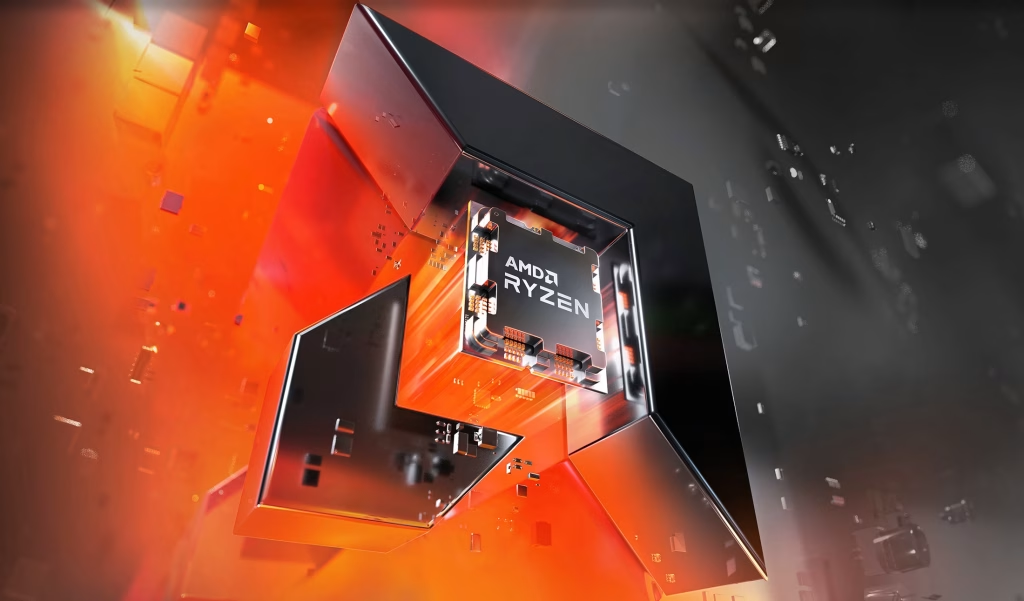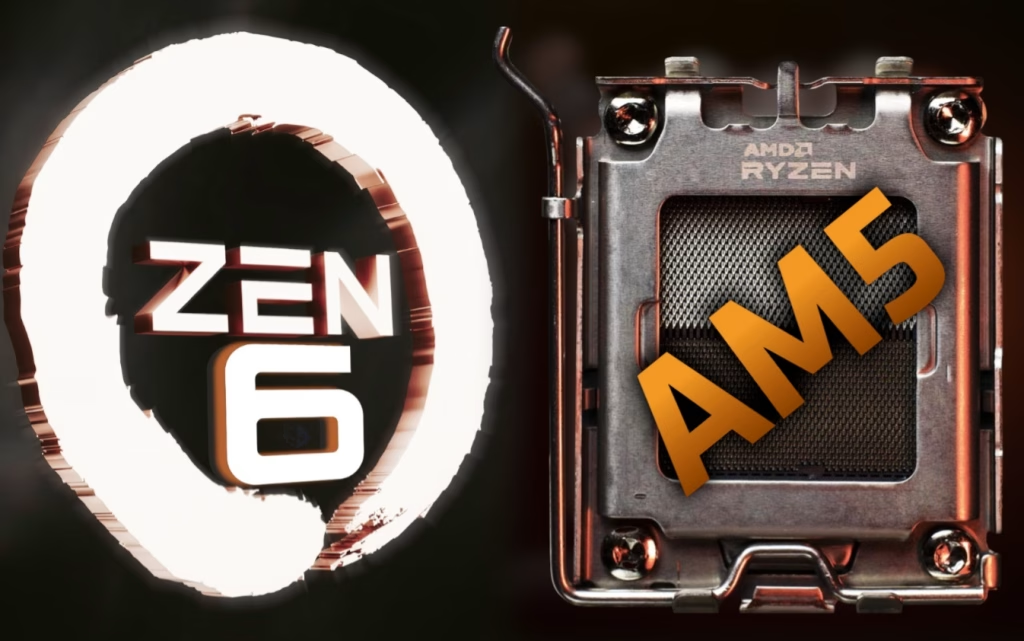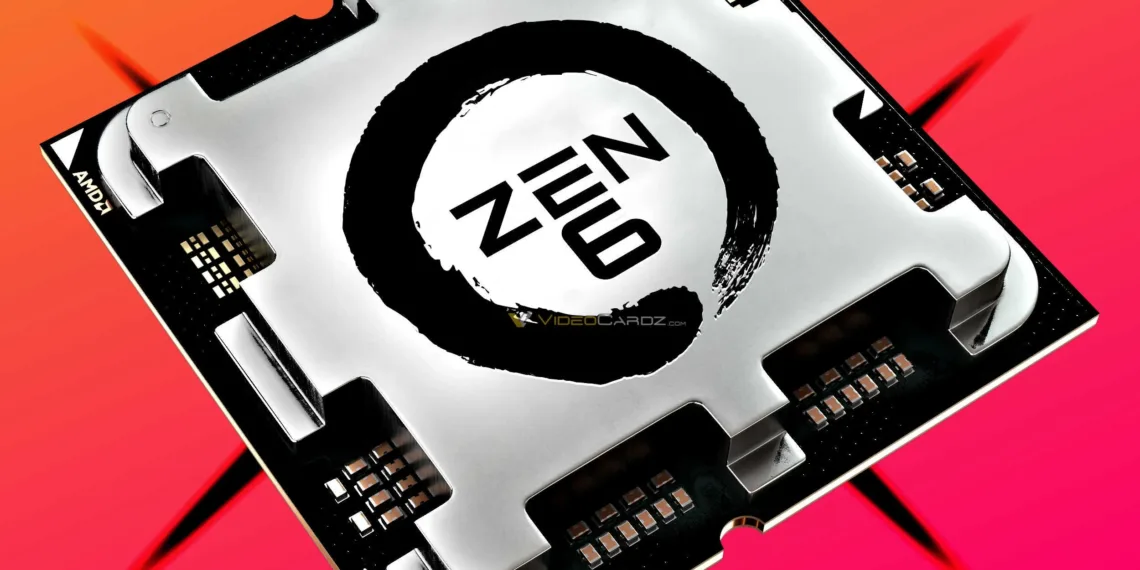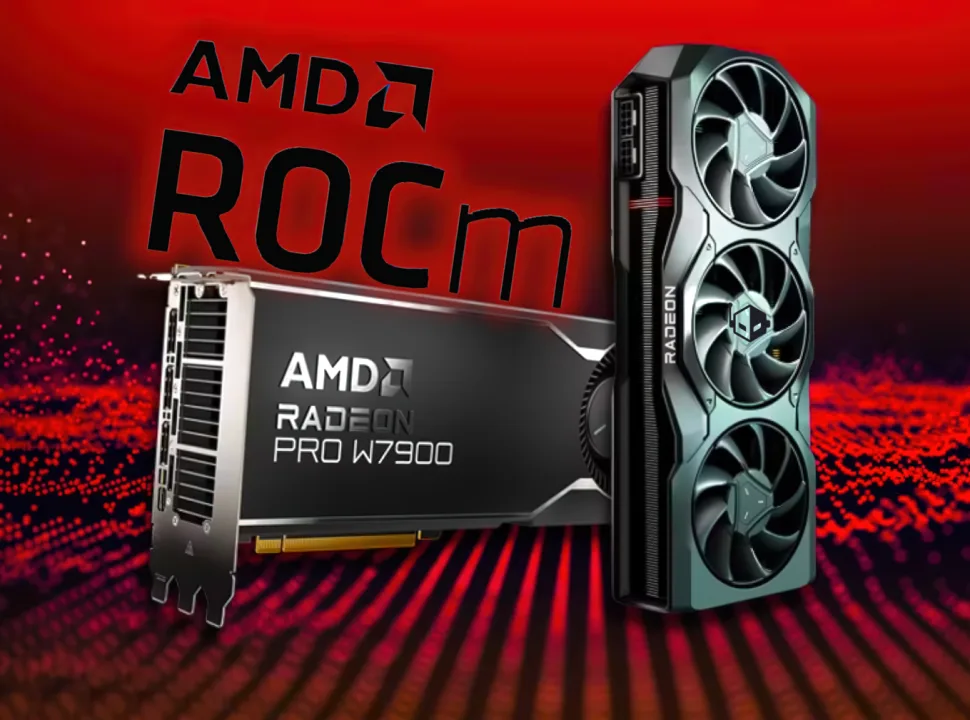AMD delivered blockbuster Q3 2025 results that sent a clear message to competitors: Team Red is firing on all cylinders. The chipmaker not only confirmed its next-generation Zen 6 processors will leverage TSMC’s cutting-edge 2nm process technology but also reported record-breaking gaming revenue of $4 billion—representing a staggering 73% year-over-year growth that signals AMD’s strongest position in years.
Table of Contents
AMD’s Roadmap: Zen 6 and Beyond
| Architecture | Process Node | Launch Timeline | Key Features |
|---|---|---|---|
| Zen 4 | TSMC 5nm | 2022 | AM5 platform debut |
| Zen 5 | TSMC 4nm | 2024 | Current generation |
| Zen 6 | TSMC 2nm (N2P) | H2 2026 | AI instructions, 12-core CCDs |
| Zen 7 | Future node (likely A14) | 2028 | Matrix engine for AI |
At its Q3 2025 earnings call, AMD reaffirmed its CPU roadmap with significant revelations. The next-generation Zen 6 architecture, codenamed “Morpheus,” will be built on TSMC’s advanced 2nm-class process technology and is scheduled for a second-half 2026 launch. AMD CTO Mark Papermaster confirmed that both the standard Zen 6 and the high-density Zen 6c variant will deliver IPC improvements alongside enhanced AI capabilities.
According to Tom’s Hardware, AMD will be the “industry-first” to leverage TSMC’s flagship 2nm process node for consumer processors, giving Team Red a potential advantage over Intel’s competing Nova Lake architecture.

Record-Breaking Q3 2025 Financial Performance
AMD’s Client and Gaming segment shattered expectations in Q3 2025, recording $4 billion in revenue—a phenomenal 73% increase year-over-year. The company’s overall quarterly revenue reached a record $9.2 billion, up 36% compared to the same period last year.
Breakdown of AMD’s Q3 2025 Gaming Success:
- Client Revenue: Record $2.8 billion (+46% YoY) driven by Ryzen processor sales
- Gaming Revenue: $1.3 billion (+181% YoY) from semi-custom console chips and Radeon GPUs
- Operating Income: $867 million, nearly tripling from $288 million in Q3 2024
- Operating Margin: Improved from 12% to 21%
AMD CEO Dr. Lisa Su attributed the explosive growth to “record sales of Ryzen processors,” particularly the 3D V-Cache variants that continue dominating gaming benchmarks. Desktop CPU sales reached all-time highs, with Ryzen 9000 processors delivering exceptional performance across gaming, productivity, and content creation workloads.
What’s Driving AMD’s Gaming Dominance?
The 73% year-over-year surge in Client and Gaming revenue stems from multiple sources:

Ryzen Processor Momentum: AMD’s Ryzen 9000 series CPUs, built on the current Zen 5 architecture, achieved record channel sell-in and sell-out numbers. Commercial PC segment grew over 30% YoY with major Fortune 500 wins across healthcare, financial services, and manufacturing sectors.
Semi-Custom Revenue Growth: Higher sales of custom chips powering PlayStation 5, Xbox Series X|S, and handheld gaming devices like the ROG Ally contributed significantly. These semi-custom solutions saw increased demand as Sony and Microsoft ramped production ahead of the holiday season.
Radeon GPU Resurgence: Strong demand for Radeon 9000 series graphics cards, coupled with the growing adoption of FSR 4 upscaling technology (now supported in over 85 games), helped AMD gain ground in the competitive GPU market.
Zen 6 Technical Specifications Leak
Industry leaks suggest Zen 6 will represent a significant architectural overhaul. According to reports from Hardware Busters, the next-generation processors will use a hybrid approach:
- Core Compute Dies (CCDs): TSMC N2P 2nm process with 12 cores per CCD (up from 8)
- I/O Die (IOD): TSMC N3P 3nm process for cost optimization
- L3 Cache: 48MB per CCD (increased from 32MB in Zen 5)
- Memory Support: DDR5-6400 with dual memory controller design
- Clock Speeds: Targeting 6.5-7.0 GHz with improved IPC gains
- PCIe Support: Gen 6.0 with 64 PCIe 5.0 lanes and 32 PCIe 6.0 lanes
Desktop Ryzen 10000 processors based on Zen 6 will maintain AM5 socket compatibility, meaning users can upgrade without replacing motherboards—a continuity spanning from Zen 4 (2022) through Zen 7 (2028).

Zen 7: The True Next-Generation Leap
AMD also officially confirmed Zen 7 architecture for the first time, positioned as a major generational leap rather than an iterative update. Scheduled for 2028 and built on what AMD calls a “Future Node” (likely TSMC’s A14 process), Zen 7 will introduce a dedicated matrix engine specifically designed for AI workloads—signaling AMD’s commitment to integrating AI acceleration directly into CPU cores.
Market Position and Competitive Landscape
AMD’s strong Q3 performance solidifies its position against Intel, which continues facing challenges with its Arrow Lake architecture. With Zen 6 launching in late 2026 and Intel’s Nova Lake expected around the same timeframe, the desktop CPU market is shaping up for an intense battle.
The company’s Data Center segment also performed exceptionally well, reaching $4.3 billion in revenue (+22% YoY) driven by 5th Gen EPYC processors and Instinct MI350 series AI accelerators. AMD’s partnerships with OpenAI and Oracle for upcoming MI450 deployments further strengthen its AI credentials.
Frequently Asked Questions
Q1: When will AMD Zen 6 processors launch?
AMD confirmed that Zen 6 processors will launch in the second half of 2026, with TSMC’s 2nm mass production ramping in Q3 2026 to support the release timeline.
Q2: What process node will Zen 6 use?
Zen 6 will use TSMC’s advanced N2P (2nm-class) process for the Core Compute Dies and N3P (3nm) process for the I/O Die, representing a significant jump from Zen 5’s 4nm technology.
Q3: Why did AMD’s gaming revenue increase 73% in Q3 2025?
The growth was driven by record Ryzen processor sales (particularly 3D V-Cache variants), increased semi-custom revenue from PlayStation 5 and Xbox consoles, and strong demand for Radeon 9000 series GPUs.
Q4: Will Zen 6 support the AM5 socket?
Yes, AMD confirmed that all architectures from Zen 4 through Zen 7 will maintain AM5 socket compatibility, allowing users to upgrade CPUs without replacing motherboards.
Q5: How many cores will Zen 6 processors have?
Zen 6 will increase the per-CCD core count from 8 to 12, enabling desktop processors with up to 24 cores and 48 threads (with 2 CCDs), while server EPYC variants could scale to 256 cores and 512 threads.








